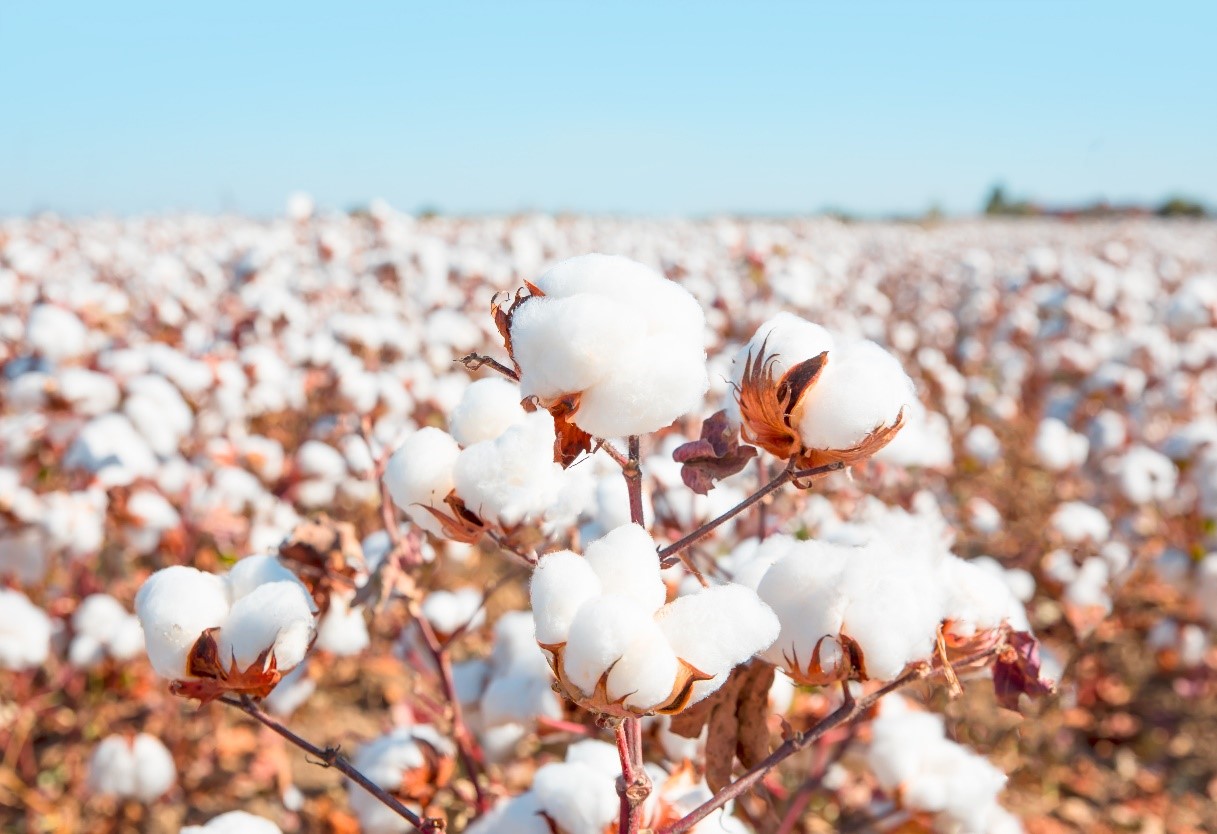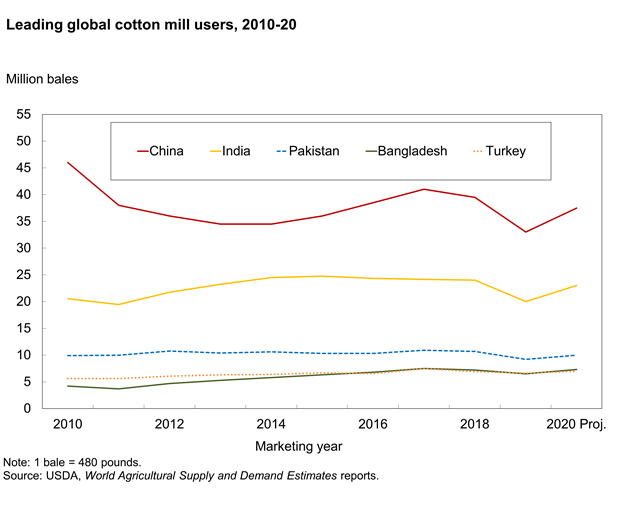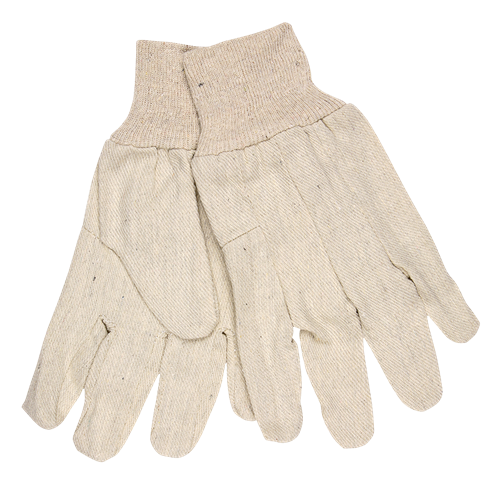30 Mar 03/30/2021
The History of Cotton
Cotton exists in some shape or form across all parts of the world, which means virtually everyone can identify it. The plant has helped tell a story that most nations have taken part in over the centuries. Cities around the globe, even Memphis, TN, where MCR Safety started, have woven pieces of the great cotton tale. The local Cotton Museum shares the Memphis Cotton Exchange's historical adventures. The Exchange opened in 1874 and stood as a worldwide market for traders across the global economy. It functioned as a trade organization that regulated cotton and set rules for everything from grading standards to cotton pricing until it closed its doors in 1978. Computer trading found favor for cotton traders, which is why it closed and now operates as a museum.

Cotton has impacted the entire world.
Throughout its evolution in becoming a staple crop, cotton has been utilized in a wide variety of products. Today, it is a global commodity that impacts all international markets mainly due to its versatility in producing textiles such as clothing.


Graphs from the United States Department of Agriculture (USDA) show the largest importers and exporters of cotton, impacting countries worldwide.
This article dives into the origins of cotton, how it impacts world economies to this day, and its use to make cotton work gloves.
Where did cotton originate?

While most people are familiar with what cotton is, many are unaware of cotton's lengthy history. While nobody knows precisely how old cotton is, most discoveries point to its origin occurring around the time of domestication. Archaeologists have uncovered cotton fabric pieces in Peru, and references to cotton appear in Egyptian texts dating back to around 6000 BCE. There have also been bits of cotton bolls discovered in Mexican caves that date back to about 7000 BCE.
In our modern world, cotton continues to play an essential role in the global economy. Because different species grow in different regions worldwide, the world's marketplace is impacted by cotton. Cotton grows in several different species: extra-long-staple, short-staple, and long-staple. Extra-long cotton staples, commonly known as Pima cotton (Gossypium barbadense), are used in high-end apparel and bedsheets. Egypt is one of the leading producers of this type of cotton, and they produce many luxurious cotton fabrics using Pima cotton. Upland cotton (Gossypium hirsutum) grows across Mexico, and its strong, durable fibers are commonly used in denim fabrics. The southern U.S. states produce mostly short-staple cotton. This cotton crop is known for being a more cost-effective fiber, and it is commonly found in curtains, upholstery, and everyday apparel.
The Empire of Cotton

From its earliest days, cotton has shaped humanity's economic landscape—both ancient and modern. It has caused the rise and fall of entire societies, causing nations to fight costly wars over its production and sales. One of those countries spurred into battle over cotton is America.
Over the centuries, cotton rose to become the most widely used fiber for manufacturing clothes and textiles, only recently replaced by polyester. Even in second place, cotton production still tops 25 million tons across the globe annually. India has a history with cotton and cotton textile production that dates back to 5000 BCE, and to this day, India continues to lead the world in cotton production.

India remains at the top of all cotton-producing countries globally.
Cotton's spread across the world did take some time. Herodotus, the Greek historian, is quoted around 5th century BCE as saying, "There are trees which grow wild, the fruit of which is a wool exceeding in beauty and goodness that of sheep." However, it was not until Alexander the Great invaded India in 327 BCE that cotton was introduced to the Western world. Interest in cotton apparel began to flourish as Greek troops wore the fabric back to Greece and presented it to Western economies. The rise of the Arab empire across Africa and Spain in 600 and 700 AD helped introduce cotton even further into Europe. This spread shows up in the actual English word, which originates from the Arabic word "quton."

The spread of cotton across the globe is attributed to Alexander the Great.
There are also accounts of cotton pushing east into China around the 6th century, and reference to the plant shows up in documented Chinese texts with a Gupta king. What is astonishing to many is that cotton didn't reach England until roughly the 15th century, with wool being the primary clothing source before. However, when consumers began to see lightweight, colorful woven cotton textiles arriving from India, cotton took off across the English economy, and demand for it transformed the entire world.

Cotton thread being manufactured in Lancashire, England, around the year 1835.
The cotton plant shaped the lives of workers, bankers, brokers, and manufacturers. And, as we first mentioned, it has shaped the destiny of entire nations. Today, many developing nations are seeing the most significant impact from the modern cotton empire. Many cotton textile mills have moved to countries where labor is less expensive, such as Bangladesh, China, India, and Pakistan.

As the graph indicates, most cotton mills are found across Asian and Middle Eastern countries.
Even though cotton has impacted developing countries more in recent years, cotton is still a major crop in the U.S. In fact, the U.S. is the 3rd largest cotton-producing nation, harvesting over 20 million bales of cotton annually that value around $7 billion. And, U.S. textile mills consume roughly 3.6 million bales of cotton every year.
When was the cotton gin invented?

Separating cotton fibers from their sticky, prickly seeds has always been a challenge for cotton growers. The crank handle cotton gin was developed in India around the 16th century and was the first to address the need to efficiently separate cotton fibers from seeds. However, it was a 19th-century innovation by American inventor Eli Whitney that upended the cotton industry. In 1793, Whitney developed a cotton gin machine that allowed a faster way for cottonseed to be separated from the fiber. This invention sped up the entire production process and allowed farmers to grow, produce, and process more cotton in a shorter time.


Cotton gins have continued to evolve and improve. On the left, an older cotton gin vs. the more modern cotton gin on the right.
Once Eli Whitney invented the mechanical cotton gin, the painstaking and labor-intensive process of separating cotton by hand was over, and cotton production and sales increased exponentially. The labor required to unravel the cottonseed dropped from 600 hours to only 12, and seed picking went from one pound a day per person to over 500 pounds per person. Cotton officially became a worldwide industry during the Industrial Revolution and is a crop that is still growing strong.
Storing Cotton

Cotton crops really generate two crops: cotton fiber and cottonseeds. One often overlooked part of the cotton economy is the storing of cottonseed, which fuels other products, such as cooking oil, livestock feed, and poultry feed. Each cotton bale produced at the cotton gin produces 800 pounds of cottonseed, which must be stored either for short-term or long-term periods. Depending on how long it is stored, aeration may be necessary.

Cottonseed
Cotton and cottonseed can be stored in numerous types of buildings, but the number one concern is to keep the seed dry. Metal buildings are considered to be one of the most cost-effective ways to store cottonseed. However, there are different approved guidelines across each U.S. state for storing cotton. You can find separate PDFs for each state here.
Common Questions

What were clothes made of other than cotton in early history?
- As we highlight on our All About Leather page, leather has been used for thousands of years to clothe people. Other materials used to make clothes include fur and wool.
How does cotton grow?
- Cotton is best planted when temperatures hit 60 degrees, which makes spring weather ideal. Planting begins in some southern states in early February. In more northern states, cotton isn't planted until around June. The article, "The Story of Cotton", goes into more specifics about growing cotton, such as seeding, flower buds, and petal changes. As nature runs its course, the boll produces fibers. It pushes out toward the warm sun, which results in the cotton material that is eventually harvested and used in apparel, including work gloves.
Where is cotton grown?
- Today, the top five countries producing cotton are China, India, United States, Brazil, and Pakistan. Other top producing countries include Vietnam, Brazil, and Egypt.
Where is cotton grown in the US?
- Cotton is primarily grown in 17 states across the southern U.S. Texas leads U.S. cotton production by producing roughly 5.5 million bales of cotton across three years. Arkansas, Louisiana, Mississippi, Georgia, and Virginia are some of the other leading cotton-producing states. Eighteen thousand farms across the U.S. are involved in growing cotton.


Who invented the cotton gin?
- Eli Whitney was the inventor of the mechanical cotton gin.
Useful Links

We've only touched the surface of cotton. A crop that has been at the core of human civilization for thousand of years can't be fully summed up in only one article. For those wanting to dig a little deeper in the subject, consider the following sites as excellent reference points:
There is also a book titled the Empire of Cotton: A Global History, which is a highly-acclaimed historical book covering how cotton has been the primary ingredient shaping all world economies.
Breaking Down Cotton Gloves

MCR Safety utilizes cotton fabric to produce over 35 variations of cotton work gloves. Cotton material is also used as a liner in countless styles, often blended with polyester. Our recent article covering the different cotton gloves we offer can be accessed by clicking the image below.
We welcome any comments, feedback, or suggestions for how we can best protect people at work.
For over 45 years, MCR Safety has proven to be a world leader in gloves, glasses, and garments. Whether it's on the shop floor, an oil rig, or a construction site, we are there to provide solutions to workplace hazards. It's all part of our commitment to protect people.
No matter your industry, we have the personal protective equipment you need.

Learn more about MCR Safety by checking out our most recent video. For more information, browse our website, request a catalog, find a distributor, or give us a call at 800-955-6887.
About the Author
Latest Articles





.png?h=628&w=1200&hash=8FB11396FCC62111CE13E7232D9FED7B)

